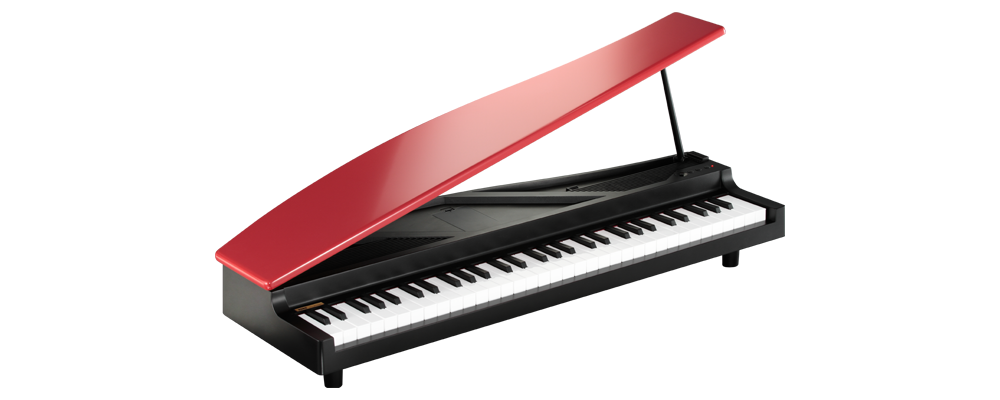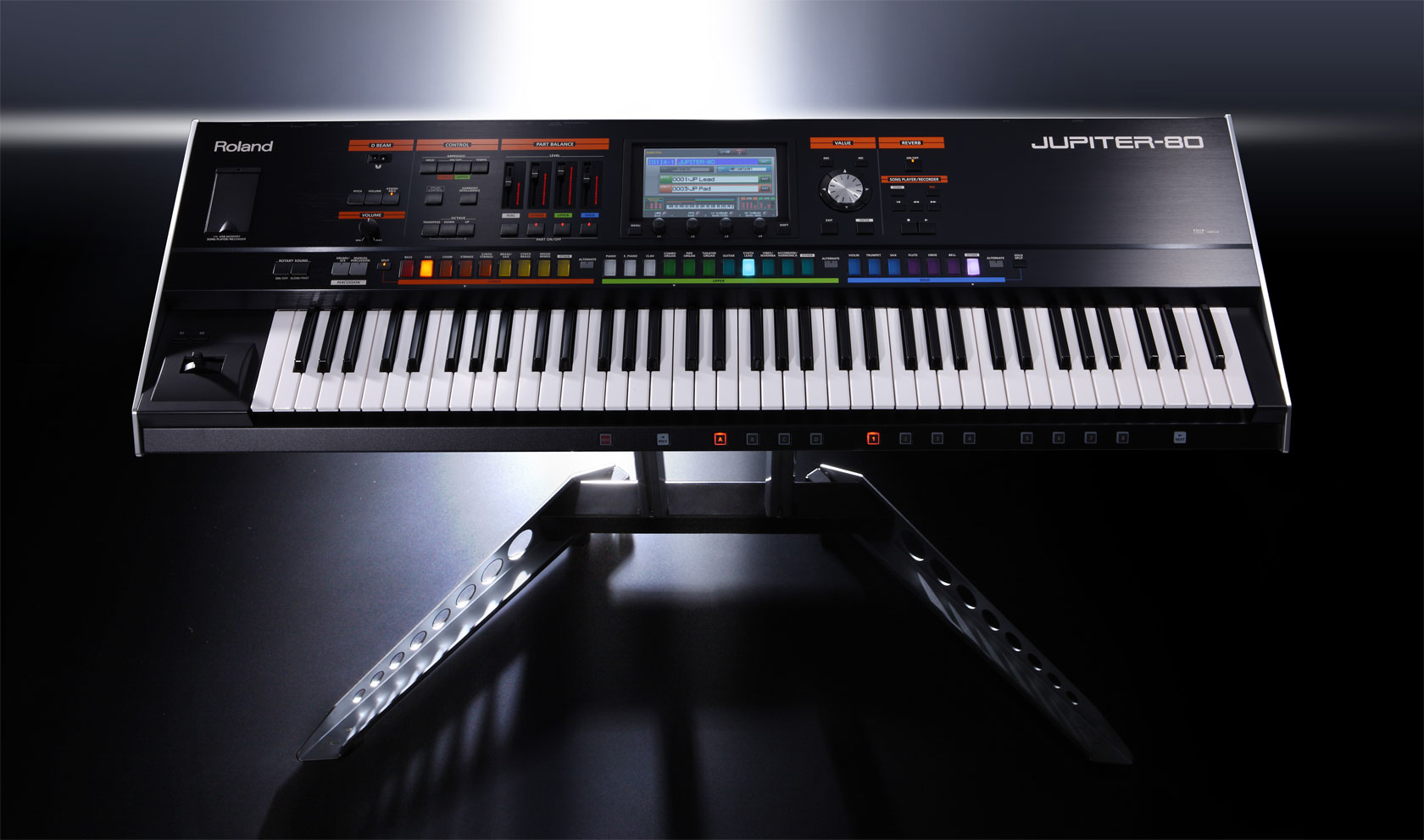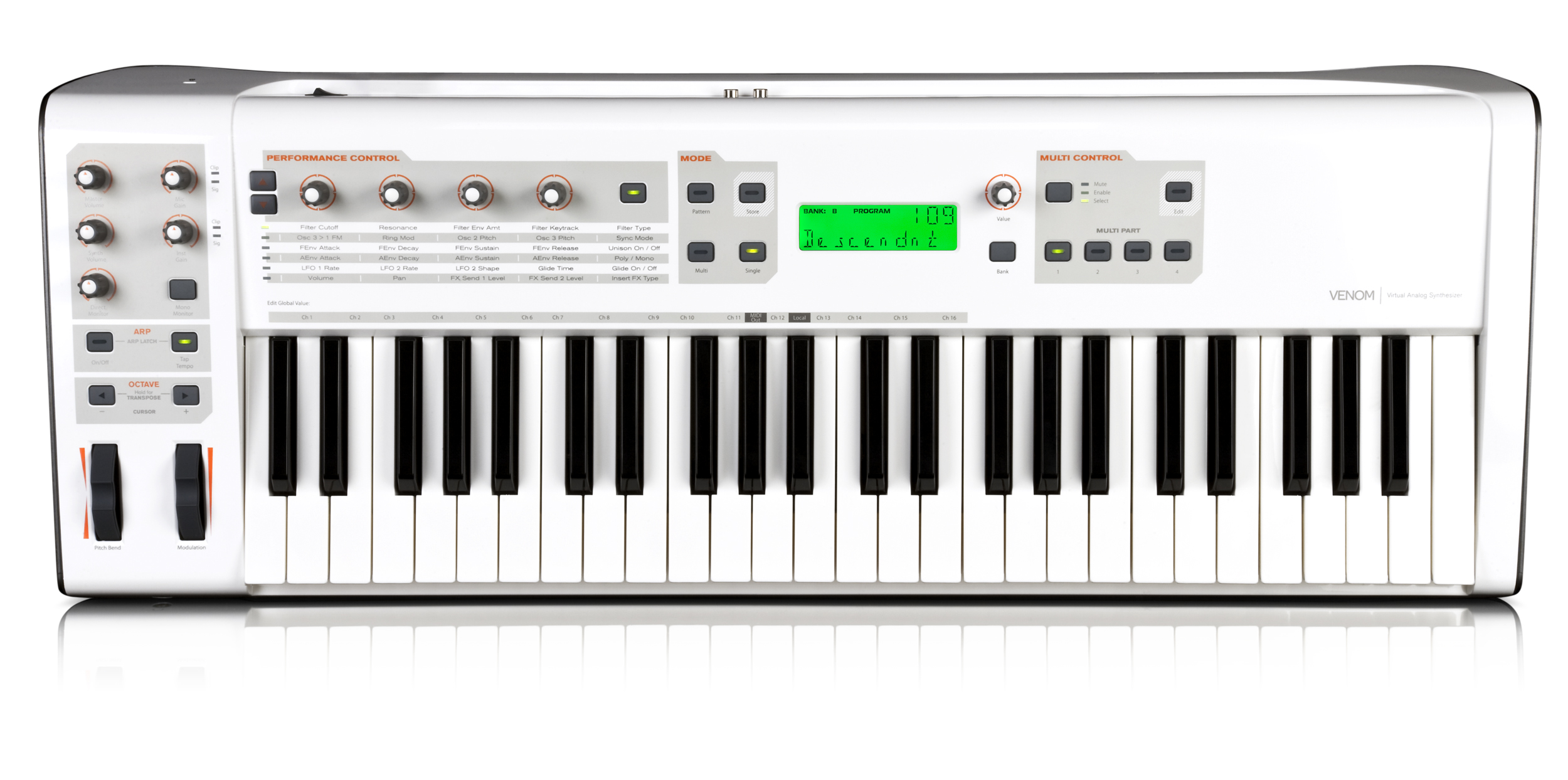25 Jul, 2011

The mini-keyed Korg microPiano digital piano features 61-key Natural Touch mini keyboard, 61 varied sounds – including 25 Short Phase Sounds; like electric pianos, harpsichords, accordion, celeste, organs, clavs, toy pianos, and many more, Max. 120 notes Polyphony, 40 demo songs, built-in speakers, battery power option. Build on ‘micro’ concept, the mini keyboard is surprisingly playable, and could be use as a serious instrument in the studio and at gigs.
The microPiano with up to 61 onboard sounds – changed by holding the sounds button and pressing any of the keys – the highlights include the piano, electric piano and the piano/string layers. They are great and inspiring to play, with its simple concept and general sound, and can be battery powered too. However, other onboard sounds like pipe organs, toy pianos, a clavinet, celeste, vibes, steel pans and some phases and demo songs are not as useful but, may appeal to the home piano users. The built-in speakers are a little underpowered but opening/shutting the lid enables you some extra options in terms of projecting the sound.
The Korg microPiano really does sound great for what looks like a toy, with some good pianos and electric pianos onboard. Use it on a gig or at a live performance. Perhaps, the Korg microPiano short fall is limited connectivity – no MIDI and no USB port therefore, the instrument is unable to integrate with computers and other studio gear. Weighing merely 11. 46 lbs, the portable keyboard is compact and looks great.. Additionally, the microPIANO is also an ideal choice for a child’s piano practice.
goat milk
incredibles
Digital Pianos Electronic Keyboards
Electronic Keyboards Organs
Organs Pianos
Pianos Player Pianos
Player Pianos World Instruments
World Instruments Electronic Music
Electronic Music Audio Samplers
Audio Samplers Audio Sequencers
Audio Sequencers Drum Machines
Drum Machines MIDI Interfaces
MIDI Interfaces Production Stations
Production Stations Sound Modules
Sound Modules Tabletop Synthesizers
Tabletop Synthesizers Das Keyboard High-Performance Mechanical Keyboards
Das Keyboard High-Performance Mechanical Keyboards The World's First Cloud Connected Keyboard.
The World's First Cloud Connected Keyboard.
10 Jul, 2011

The Roland JUPITER-80 Synthesizer is akin to a story of two synthesizers. The Jupiter-80 focuses on being a live-performance synthesizer for live playing, and a synthesizer with an array of sounds. It features 76-note semi-weighted synthesizer keyboard with SuperNATURAL sound engine, Behavior Modeling technology, max. 256-Voices Polyphony, color touchscreen, USB-MIDI/Audio interface, Tone Blender, D Beam controller.
What sets Roland Jupiter-80 apart from the synthesizers today? Normally, when a keyboardist is trying to reproduce sounds other than a traditional keyboard instrument on the synthesizer, the typical sound engine inside cannot truly “interpret” an expressive keyboard performance done on keys into an authentic guitar, trumpet, or violin performance. Similarly, in other big computer sample libraries you will find all sorts of tricks for key switching and sample variations and other ways of providing the full range of instrumental articulations on a keyboard. The SuperNATURAL synthesis engine makes those massive sounds more playable, thanks to Roland’s newly developed Behavior Modeling technology. Behavior Modeling takes care of the interpretation by constantly analyzing the keyboardist normal, natural keyboard performance, and instructs the ultra-realistic SuperNATURAL sound engines inside the Jupiter-80 to “play” and constantly “articulate” the reproduced sound just as the “real” performer would based on the keyboardists timing and interval between notes, the strength at which the various keys are struck, or if the keyboardist is pressing a pedal to sustain notes. These actions, among others available to the keyboardist, are translated by the behavior model for the selected sound being reproduced into an authentic plucked or strummed performance in the case of a guitar, aggressive or smooth bowing in the case of a violin, and the sharp or smooth pitch changes created by the valves on a trumpet and the pressure of the trumpet player’s breath. These are some of the articulations with behavior modeling.
Additionally, the Jupiter-80 architecture enables the use of four tones, each with its own effects block, each with independent controls, on each of two layers – upper and lower – plus solo and percussion voices. The upper and lower voices each have reverb – solo and percussion have compressor, EQ, and delay. Touch-button access makes it relatively easy to mix sounds. Start with splits and layers, and you are ready to use the massive sound content to produce big hybrid textures while Tone Blender then enables you to work more with movement. The Roland JUPITER-80 is a dream come true for live-performers and gigging musicians love this powerhouse synthesizer.
goat milk
incredibles
27 Jun, 2011
Electronic Keyboards Digital Pianos
Digital Pianos Portable Keyboard
Portable Keyboard Synthesizers & Workstations
Synthesizers & Workstations Free shipping on most items over $9.99!
Free shipping on most items over $9.99!

Avid’s M-Audio Venom is a 49-key, 12-voice polyphony, multi-timbral, virtual-analog synthesizer that set a new mark along these lines. The Venom offers a variety of performance controls for real-time tone shaping and can serve as a USB MIDI controller and 24-bit audio interface with microphone, line, and instrument inputs. It can also function as a standalone effects processor. The Venom features free Vyzex editor for Mac and PC, 512 single patches and 256 multi-patch combinations, Two Global Effects; Reverb, Delay, Chorus, Flanger, and Phaser, and 1 insert effect per multitimbral part ( 4 total); Compression, EQ, Distortion, Bit Reduction and Decimation.
The M-Audio Venom uses a newly designed “virtual analog” synth engine intended to offer a unique sonic signature, with the flexibility of digital operation but the warmth and grit of analog-emulation circuitry. M Audio certainly thought hard about how to pack Venom with great-sounding patches. Each one of the 512 single programs has, at its core, at least one sample of a classic synthesizer or drum machine waveform. The architecture of the synth section is three-oscillator, with each able to access any of the 41 waveforms or 53 drum sounds. It is a potent mix and the sounds are wonderful. But, the unique M-Audio Venom twist is that there is a tube saturation stage at the multi-mode filter which can be over-driven. Meaning that as well as being able to offer multiple filter modes; low, high and band, 2 and 4 pole, either 12 or 24dB of roll-off per octave, it is possible to internally distort signals. Additionally, each program can access three LFOs, three AHDSR envelopes and 16 separate modulation routing options, while effects provision comes in the form of two buses effects with Reverb, Delay, Chorus, Flanger and Phaser options.
The three arpeggiation modes are Standard, Phrase and Drum. To modify the Arpeggiator from the front panel is rather restricted but, you can do more via the Vyzex software. Vyzex software is well designed and opens Venom up to much more sound programming. The immediacy of accessing the sounds and modifying them in real-time is intuitive and impressive. For sound designers, the Vyzex software editor is just for you and M-Audio Venom will exceed your expectations too. A Phenomenal Synthesizer, indeed!
goat milk
incredibles
Digital Pianos Electronic Keyboards
Electronic Keyboards Organs
Organs Pianos
Pianos Player Pianos
Player Pianos World Instruments
World Instruments Electronic Music
Electronic Music Audio Samplers
Audio Samplers Audio Sequencers
Audio Sequencers Drum Machines
Drum Machines MIDI Interfaces
MIDI Interfaces Production Stations
Production Stations Sound Modules
Sound Modules Tabletop Synthesizers
Tabletop Synthesizers Das Keyboard High-Performance Mechanical Keyboards
Das Keyboard High-Performance Mechanical Keyboards The World's First Cloud Connected Keyboard.
The World's First Cloud Connected Keyboard.




